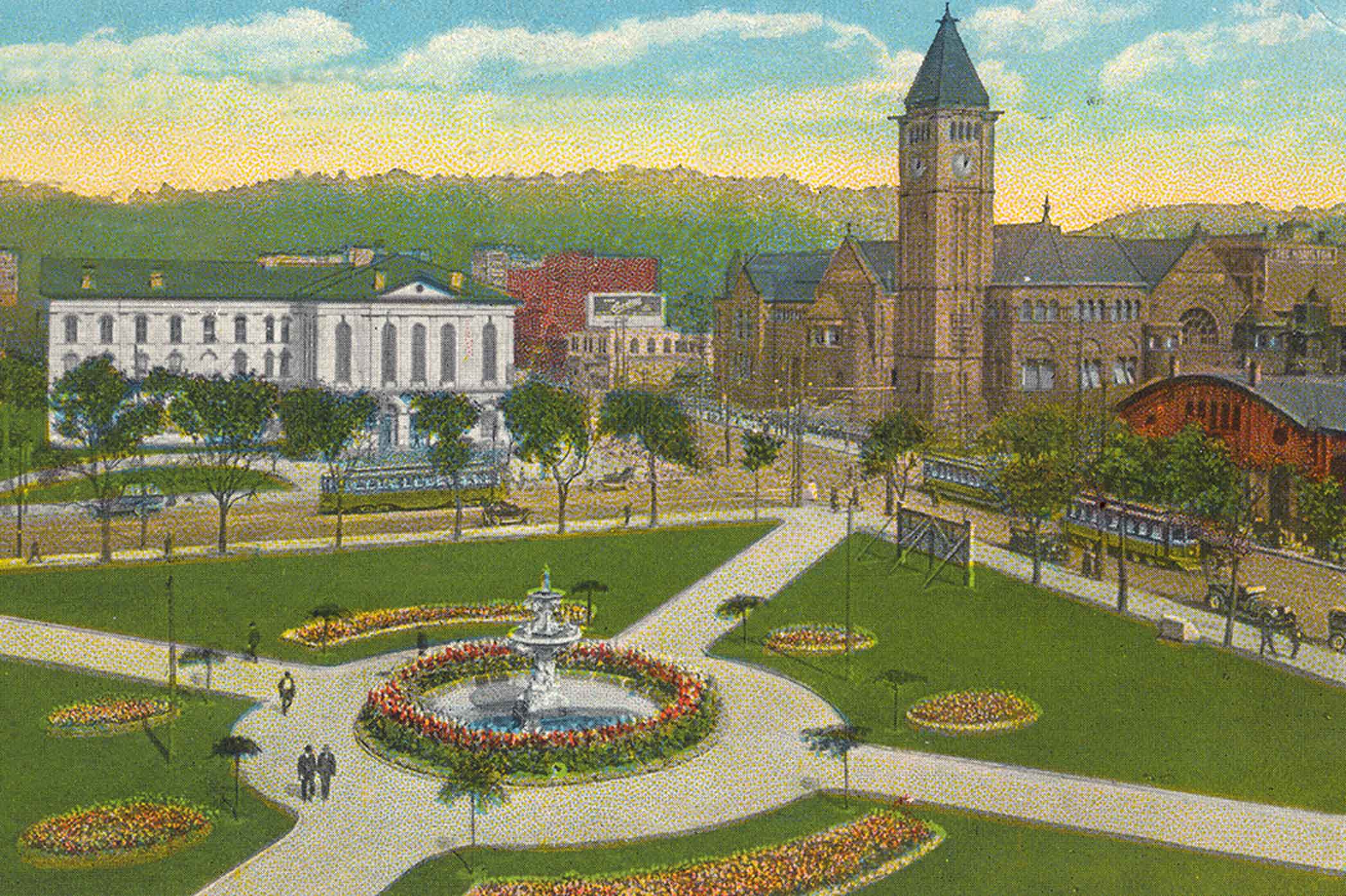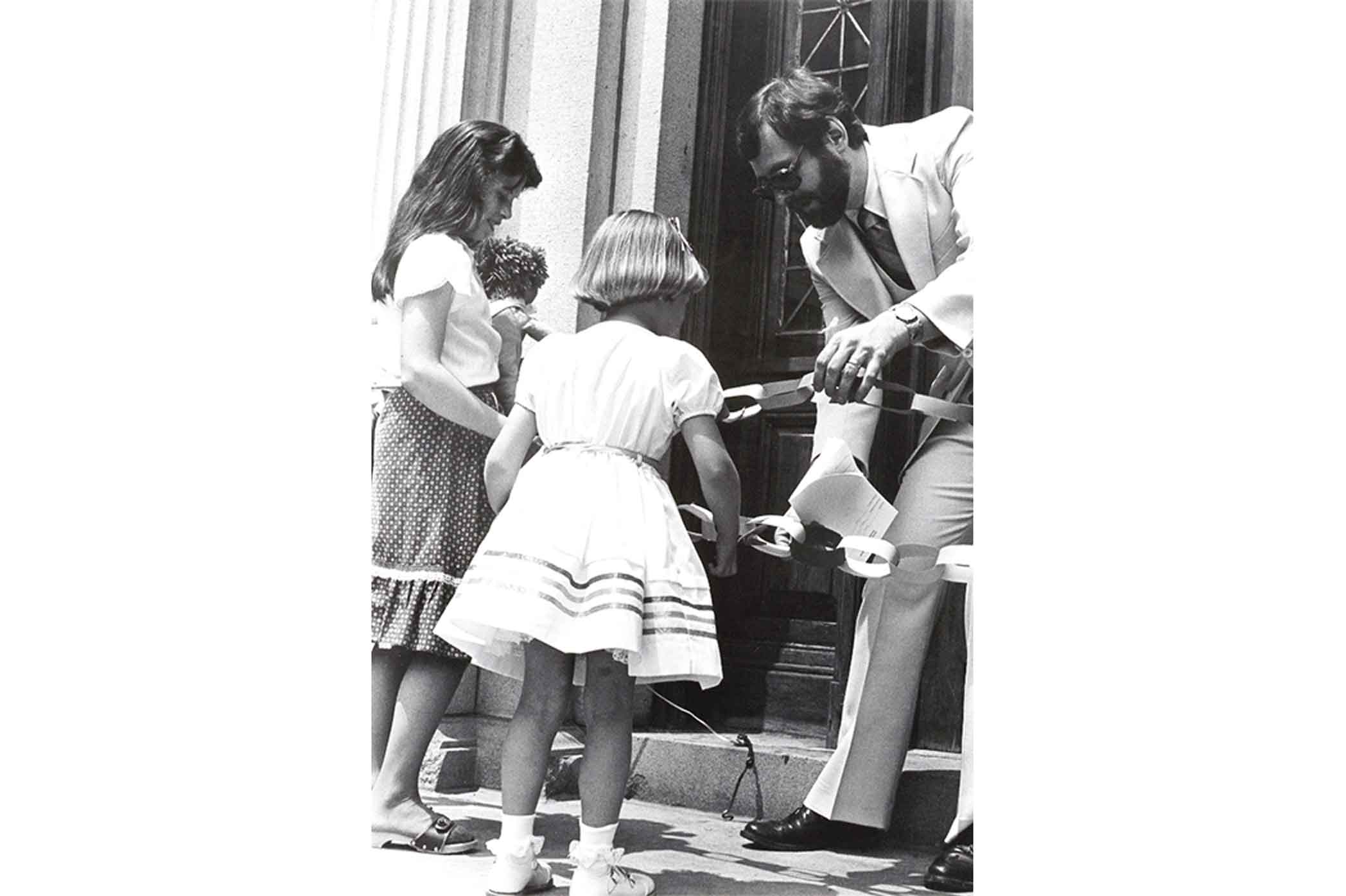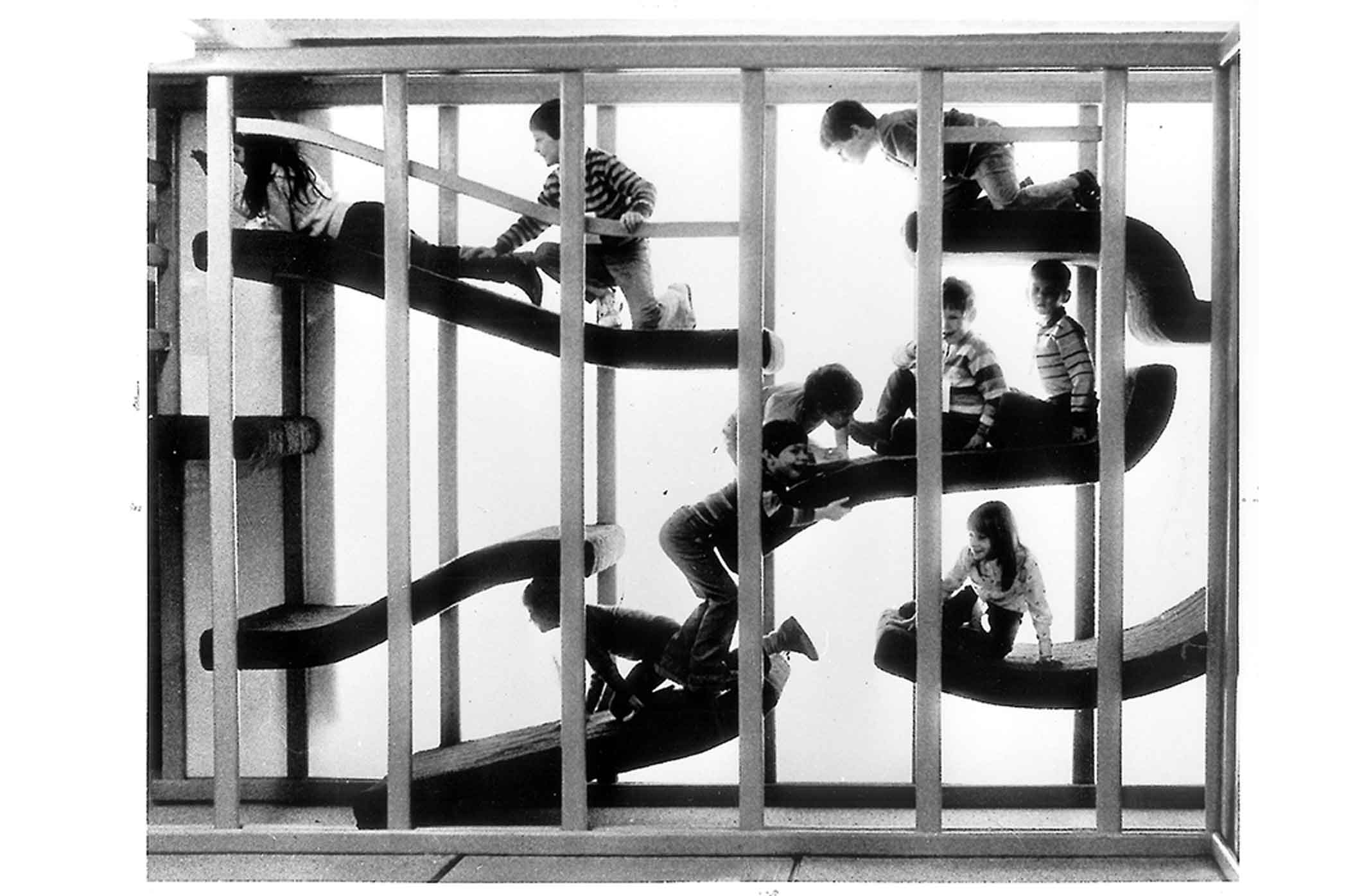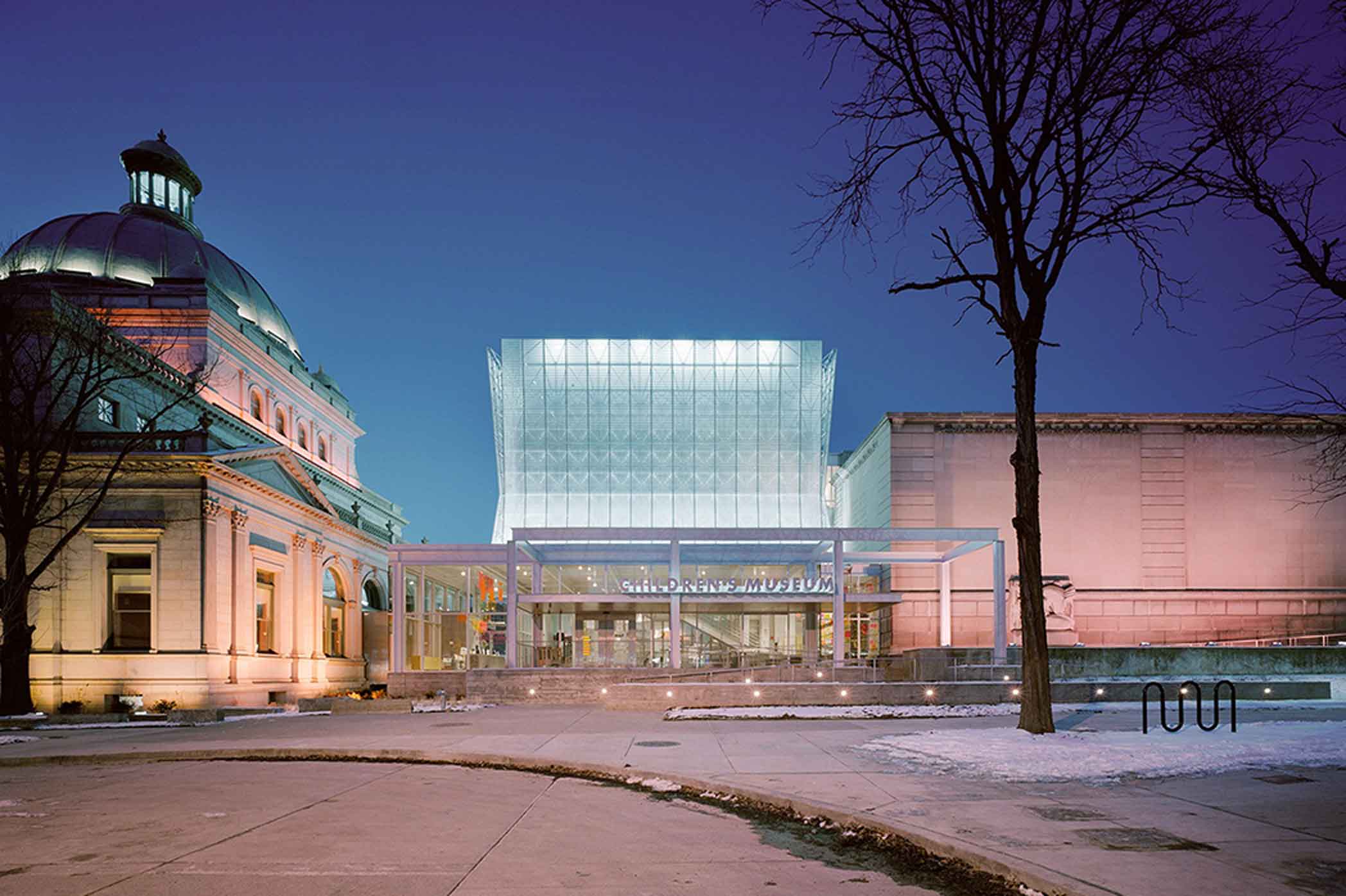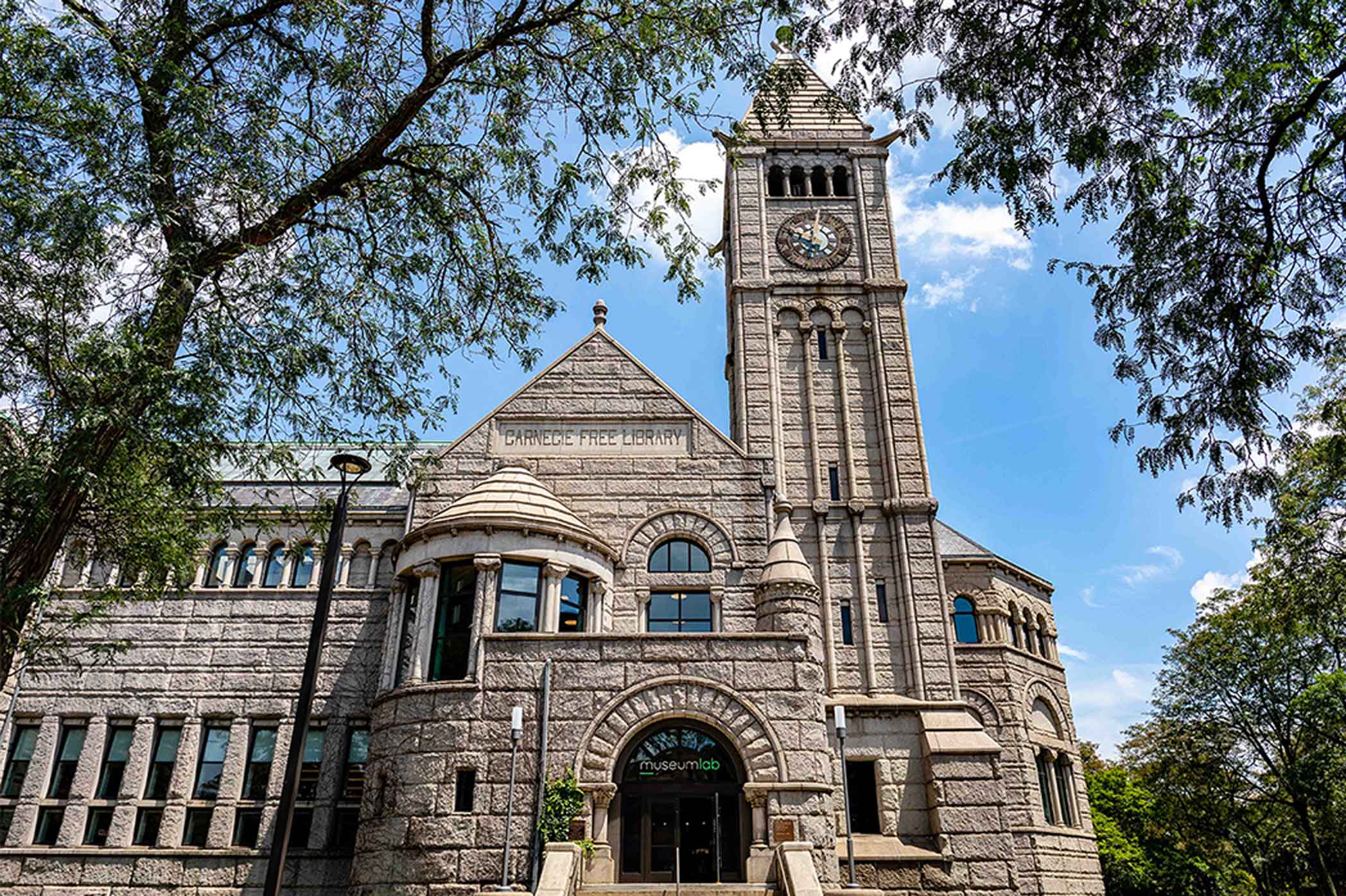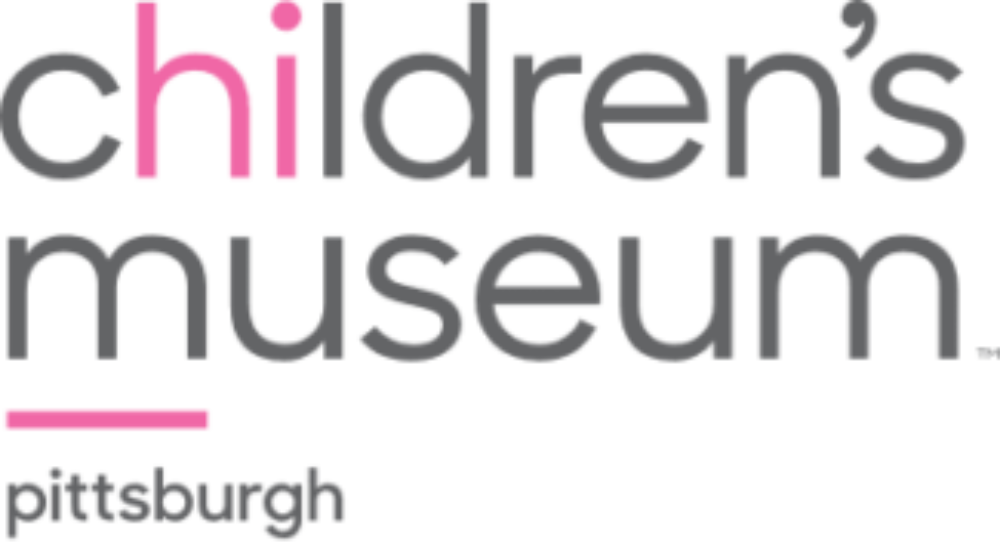Our Story
Since 1983, Children’s Museum of Pittsburgh has provided innovative museum experiences that inspire joy, creativity, curiosity and kindness.

Since 1983, Children's Museum of Pittsburgh has provided innovative museum experiences that inspire joy, creativity, curiosity and kindness.
about children’s museum of pittsburgh
Children’s Museum of Pittsburgh is a place that delights and inspires children, where they can take off on fantastic flights of imagination daily, and return to earth to splash in a river, hammer a nail and ink a silkscreen. We were named one of the 10 best children’s museums in the country by USA Today’s 10Best Readers’ Choice poll every year from 2022 – 2024.
The Museum welcomed more than 305,000 visitors in FY23 and provides loads of “real stuff” experiences for play and learning. Hands-on, interactive exhibit areas and experiences that inspire kindness, joy, creativity and curiosity include the Studio, MAKESHOP, Waterplay, Nursery, Garage, Kindness Gallery and Backyard.
The Children’s Museum’s award-winning, three-story building connects two historic buildings, Allegheny Post Office Building & the Buhl Building. Its center building is screened by a shimmering wind sculpture created by environmental artist Ned Kahn (Articulated Cloud). In 2006 the Museum became a certified green building (Silver LEED) and was honored by the American Institute for Architects and the National Historic Preservation Trust.
In 2019, we opened MuseumLab for children 10 and up, with cutting edge experiences in making, art and technology. MuseumLab is located next door to the Children’s Museum building in the historic former Carnegie Free Library of Allegheny. This building became a certified green building (Gold LEED) in 2020 and was honored by the American Institute for Architects Pennsylvania, Pennsylvania Historic Trust for Preservation and PA Museums.
recent news about Children’s Museum of Pittsburgh and MuseumLab
our commitment to justice, equity, diversity, accessibility and inclusion
museum milestones
1972
The Pittsburgh Children’s Museum Project. A group of Pittsburgh community leaders, led by Audrey Reichblum, explore the idea of a children’s museum, resulting in a mobile museum at Three Rivers Arts Festival, which travels throughout the community.
1983
The Junior League of Pittsburgh opens the Pittsburgh Children’s Museum on Pittsburgh’s Northside with less than 5,000 square feet of exhibits in the basement of the Old Post Office building, a historic landmark, leased from Pittsburgh History and Landmarks Foundation.
1985
The Museum expands to more than 20,000 square feet, moving into the entire Old Post Office building with Mystery, Magic & Mirth, a nationally recognized puppet exhibit based on the collection of Margo Lovelace.
1988
Warhol’s Myths: American Fantasies opens, highlighting Pittsburgh native Andy Warhol’s “Myths” silkscreen print series, which are part of the Museum’s permanent collection, and a hands-on silkscreening studio.
1991
Pittsburgh History & Landmarks Foundation officially deeds the Old Post Office building to the Children’s Museum.
1993
Children’s Museum receives first major gift to its endowment fund from Mrs. Nellie P. Meyers. The Museum launches three new programs: YouthAlive (an after-school program for middle school students), Outreach (a program that brings Museum programs and performers to regional schools), and a teacher education program. It also presents its first traveling exhibit, Kidsbridge.
1995
The Museum hosts its first blockbuster traveling exhibit, The Vision of Jim Henson, and sets new attendance records.
1996
Safety Street, a life-size recreation of a city street equipped with street signs and signals, crosswalks, cars, a school bus, sidewalks and bicycles, opens as an outdoor exhibit on June 1.
1998
From April to October, the Museum presents Mister Rogers’ Neighborhood—A Hands-On Exhibit, a life-sized recreation of the television show Mister Rogers’ Neighborhood, created by the Museum with support and assistance from Family Communications, Inc. and The Grable Foundation. This exhibit and a smaller version begin traveling the country following this run.
Following the Museum’s run of the Rogers exhibit, the building undergoes a major renovation which includes a new Rotunda including a re-invigorated two-story Kids’ Climber, new exhibits such as the Junk Workshop, new café, entryway, classroom and parking lot.
2000
The Children’s Museum begins developing an expansion plan to accommodate its growing audience and create a new home for child-focused organizations. In December 2000, Koning Eizenberg Architecture of Santa Monica, CA, was selected to design the expanded Children’s Museum as a result of an Architectural Competition sponsored by the National Endowment for the Arts.
2001
Museum forms the Department of Research and Evaluation with the University of Pittsburgh’s Learning Research & Development Center (now University of Pittsburgh Center for Learning in Out-of-School Environments); researchers from the Center observe how Museum visitors play and learn from existing and prototyped exhibits.
2002
The Commonwealth of Pennsylvania awards the Children’s Museum $8 million dollars to support its expansion project.
2003
The Children’s Museum breaks ground for its building expansion.
2004
The Children’s Museum expands into the adjacent Buhl Planetarium building, increasing in size to more than 80,000 square feet, opening November 6, 2004. The expanded Museum has all new exhibits, interactive artwork, a much larger café and a new parking lot. The Museum partners with local child-based organizations that occupy office space within the Museum to foster collaborations in incubator-like settings. The original partners are: Child Watch of Pittsburgh, Pittsburgh Public Schools (which operates 2 Pre-K/Headstart classes within the Museum), Reading Is FUNdamental Pittsburgh, The Saturday Light Brigade family radio show (broadcasting from a studio within the Museum,) ToonSeum (a gallery of cartoon art in the Museum) and the University of Pittsburgh Center for Learning in Out-of-School Environments.
Mister Rogers’ Neighborhood—A Hands-On Exhibit is permanently installed in the expanded Museum.
The Museum’s capital campaign for its expansion raised $28.8 million dollars, exceeding its goal of $28 million dollars.
2005
The Museum develops a new exhibit, The Art of Andy Warhol, with The Andy Warhol Museum, based on Warhol’s silkscreens and paintings for children. It debuts at the Children’s Museum of Manhattan.
The Museum opens its newest exhibit area, The Backyard.
2006
The Museum collaborates with The Andy Warhol Museum, City of Pittsburgh, and Northside Leadership Conference to revitalize the New Hazlett Theater in Allegheny Square, which opens in September as a performing arts venue for mid-sized performing groups.
2007
The Museum creates a new traveling exhibit, How People Make Things, to feature the science, engineering, math, and technology used in manufacturing everyday items. It is based on the factory visit segments from the Mister Rogers’ Neighborhood television show.
The Children’s Museum spearheads the Charm Bracelet Project, an effort to link existing arts and cultural venues in the Northside area of the City and jointly strengthen their Northside Pittsburgh neighborhood.
The traveling exhibit Mister Rogers’ Neighborhood—A Hands-On-Exhibit completes its national tour. Of the two versions created, one is on permanent display in the Museum; the second is donated to the New Orleans Children’s Museum.
The Museum’s third capital campaign begins in September 2007.
With support from The Claude Worthington Benedum Foundation and the Laurel Foundation, and assistance from the Heinz Architectural Center at the Carnegie Museum of Art, the Children’s Museum hosted The Allegheny Public Square 2007 Design Competition of Ideas – an event that sought ideas for the revitalization of Allegheny Public Square. Twenty five design firms were invited to create a plan for a natural and environmentally sensitive gathering place that could accommodate a variety of community activities.
Andrea Cochran Landscape Architecture of San Francisco was announced the winner of a design competition for the redevelopment of Buhl Community Park.
2008
The Children’s Museum commences a year-long celebration of its 25th birthday.
2009
The F.I.N.E. Artist Residency is launched, bringing artists to the Museum to engage in a wide spectrum of traditional and new media.
2010
The Museum creates Pittsburgh: Yinz Play, an exhibit celebrating the iconic people, places, food and story of Pittsburgh.
2011
MakeSHOP, a maker space with digital and analog activities, opens in the space previously occupied by Mister Rogers’ Neighborhood. Mister Rogers’ artifacts are distributed throughout the Museum.
The New Media Department is created within the Museum.
The Museum produces the first Maker Faire Pittsburgh.
The Museum is the recipient of a $1 million Kresge Foundation grant, cementing its capitalization plan and increasing the board designated fund.
2012
Buhl Community Park opens in June after a year of construction and a capital campaign which raises $6.5 million. A $600,000 maintenance fund is created to ensure its upkeep.
The Learning and Research Department is created within the Museum.
2013
The Association of Children’s Museum’s Conference is held in Pittsburgh with more than 900 attendees. The Children’s Museum is a host organization.
The Junior League is honored at the gala with the Great Friend of Children Award.
WaterPlay is redesigned.
2014
Museums for All program is launched nationally, based on the Children’s Museum’s model of charging $2 admission per person to families presenting an EBT/ACCESS card.
The Museum opens XOXO: An Exhibit about Love and Forgiveness as a traveling exhibit.
The Museum recommits to Accessibility and Inclusion efforts with upgraded programs and staff training.
2015
The Museum creates a makerspace for teens who have aged out of the foster care system and reside at the Action Housing Uptown Lofts.
Very Eric Carle: A Very Hungry, Quiet, Lonely, Clumsy, Busy Exhibit opens at the Children’s Museum and begins its traveling exhibit tour after this run.
Museum Ambassadors, a group of young professionals involved in sharing the Museum’s mission is launched.
2016
Children’s Museum partners with the West Virginia-based Education Alliance to form the West Virginia Maker Network, with support from the Claude Worthington Benedum Foundation and Chevron. The initiative provides professional development for educators and support for the creation of community-based makerspaces in seven West Virginia counties.
Maker Boot Camps for educators begin.
The Exhibits and Design Department is established with business development as its secondary mission. Children’s Hospital of Pittsburgh is one of the first clients.
Daniel Tiger’s Neighborhood: A Grri-ific Exhibit is created by the Museum in collaboration with Fred Rogers Productions. It begins a traveling tour after this run.
The McCune Foundation supports the establishment of a $3 million Growth Capital Fund.
2017
The Making Spaces program launches with $1.8 million in support from Google to bring making to schools throughout the U.S. using a hub-and-spoke model.
A satellite Children’s Museum is installed at Hosanna House in Wilkinsburg with exhibit components and a MakeSHOP.
Koning Eizenberg is selected to design MuseumLab, the Museum’s new space for youth 10 and up in the adjacent former Carnegie Free Library of Allegheny.
The Museum is awarded $1 million from the state for MuseumLab.
2018
Construction begins on MuseumLab.
$2.3 million in New Market Tax Credits are secured for MuseumLab.
The Pigeon Comes to Pittsburgh, based on the children’s literature of Mo Willems, opens
at the Museum with record attendance and begins a traveling tour as The Pigeon Comes to *Your City Here*.
The Museum creates and opens Rube Goldberg: A World of Hilarious Invention!, inspired by Rube’s original illustrations and inventive storytelling. It begins its traveling tour after this run.
2019
MuseumLab, the Children’s Museum’s newest expansion, opens next door with exhibits and programs for youth 10 and up on April 27, 2019.
